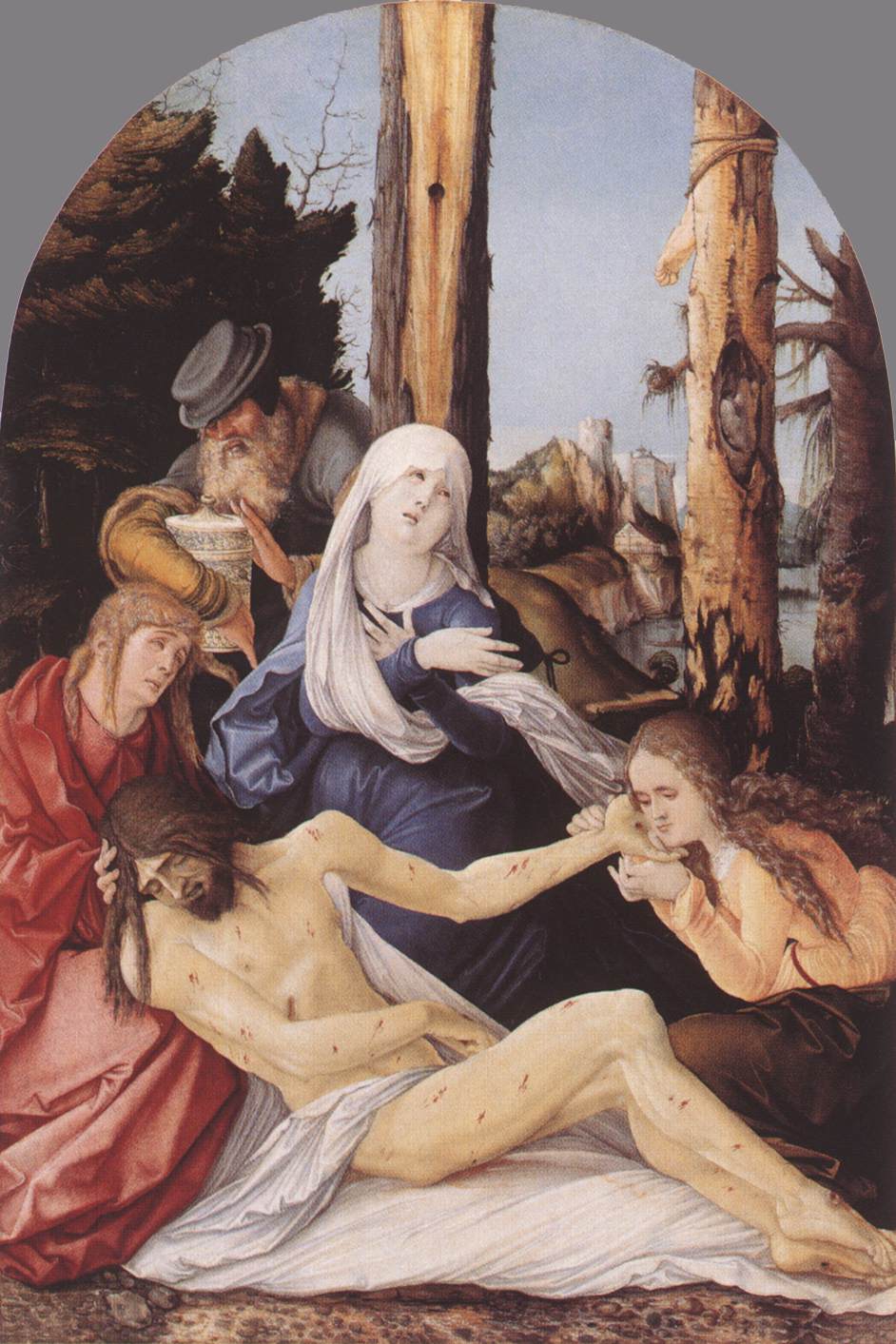Description
The painting "The Lamentation of Christ" by artist Hans Baldung Grien is a German Renaissance masterpiece depicting the biblical scene of Jesus' crucifixion and his subsequent lamentation by his followers. The work, done in oil on panel, measures 141.3 x 96 cm and is in the collection of the Basel Art Museum.
One of the most interesting aspects of this painting is its artistic style, which combines elements of the Italian Renaissance with the German Gothic tradition. Baldung Grien uses a detailed and painstaking technique to create a realistic and emotional image of the scene, with careful attention to detail in the anatomy of the characters and in the expressions on their faces.
The composition of the painting is also remarkable, with a pyramid-shaped arrangement of the characters that directs the viewer's gaze towards the center of the scene, where the body of Christ is located. The figure of Mary, the mother of Jesus, is particularly prominent in the composition, with her expression of pain and her gesture of supporting the body of her son.
Color wise, Baldung Grien uses a restrained palette of earth tones and grays, reinforcing the sense of sadness and mourning that pervades the scene. However, there are also brighter touches of color in the details of the clothing and in the objects that surround the characters.
The history of the painting is equally fascinating. It is believed that it was commissioned by the Fugger family, one of the richest and most powerful in Europe in the 16th century, and that it formed part of their private collection for centuries. After passing through several hands, the work was acquired by the Basel Museum of Art in 1934.
Finally, there are some little-known aspects of painting that deserve to be highlighted. For example, Baldung Grien includes several symbolic details in the work, such as the lamb at the bottom of the composition, which represents Christ's sacrifice for humanity. In addition, the figure of the man in the background of the scene, dressed in modern clothes and looking towards the viewer, can be interpreted as a self-portrait of the artist, which adds a personal and enigmatic touch to the work.

